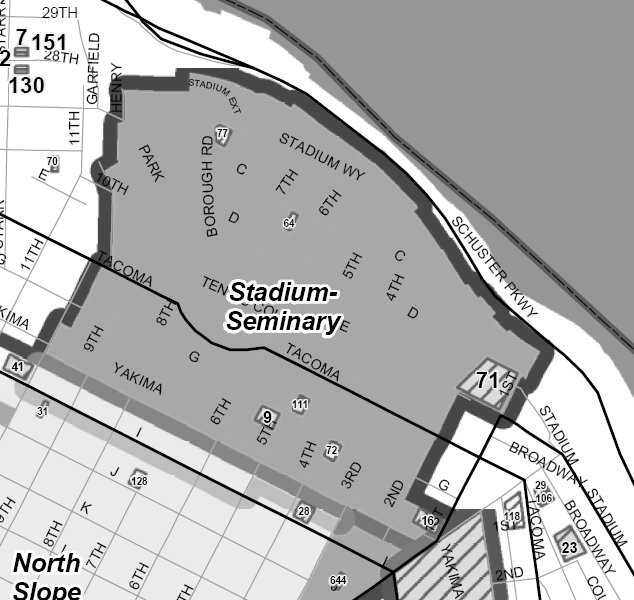Stadium-Seminary Historic District
Introduction
Author-Uploaded Audio
Welcome to the Tour.
Text-to-speech Audio
Images
Boundaries of the Stadium-Seminary Historic District

Backstory and Context
Author-Uploaded Audio
Listen to a narration of this entry's description by Tacoma Historical Society.
Text-to-speech Audio
"Dominant architectural styles within the district are Queen Anne and Colonial Revival styles; Tudor, Chalet and California Bungalow styles; and Mediterranean, or 20th century Italian Villa Style. There are also homes in the "Modern English", or Jacobethan vein, and there are a number of "Colonial" cottages and "Norman Farmhouses" representing the latest historic period of development. Interspersed in the east and south portions of the district are pattern-book cottages arranged in identical sets of two or more. The apartment buildings have an assortment of historical surface details derived from several of the styles mentioned above.
Lawns and street trees (predominantly Horse Chestnut and Maple) contribute to a pleasing, overall impression of green space. Although his proposal was never used because of unforeseen political and economic considerations, Frederick Law Olmstead was commissioned to prepare a master plan for New Tacoma in 1873. The general concepts of the City Beautiful Movement did influence the eventual layout of the Stadium-Seminary district when construction began 15 years later. It was a planned development on a fairly grand scale which is today most apparent in the extensive street plantings, orientation to vistas and distribution of open space. Wright Park and Garfield Park are located on opposite sides of the district, although the former is separated from the neighborhood by a major arterial. Annie Wright Seminary and an undeveloped ravine provide additional landscape features of contrasting texture - one carefully maintained, the other left in its natural state.
The plat of the district is on an angled grid - skewed 45 degrees with respect to the adjoining parts of the city. The streets are oriented parallel and perpendicular to the shoreline over an almost equilateral wedge-shaped section that comes to a point further up the hillside beyond the district boundaries. The cross streets afford incomparable views across the harbor and Puget Sound with the Olympic and Cascade Mountain Ranges in the distance. The exact orientation of these vistas was apparently an important consideration. Had the grid followed the pattern in other parts of the city, the streets running down the hillside would have focused attention on the tide flats at the mouth of the Puyallup River (now heavy industrial development near the Port of Tacoma)."
Sources
National Register Nomination, May 26th 1977. Accessed October 9th 2020. https://cms.cityoftacoma.org/planning/historic-preservation/districts/stadium-nr.pdf.
National Register Nomination, Dept. of Interior
